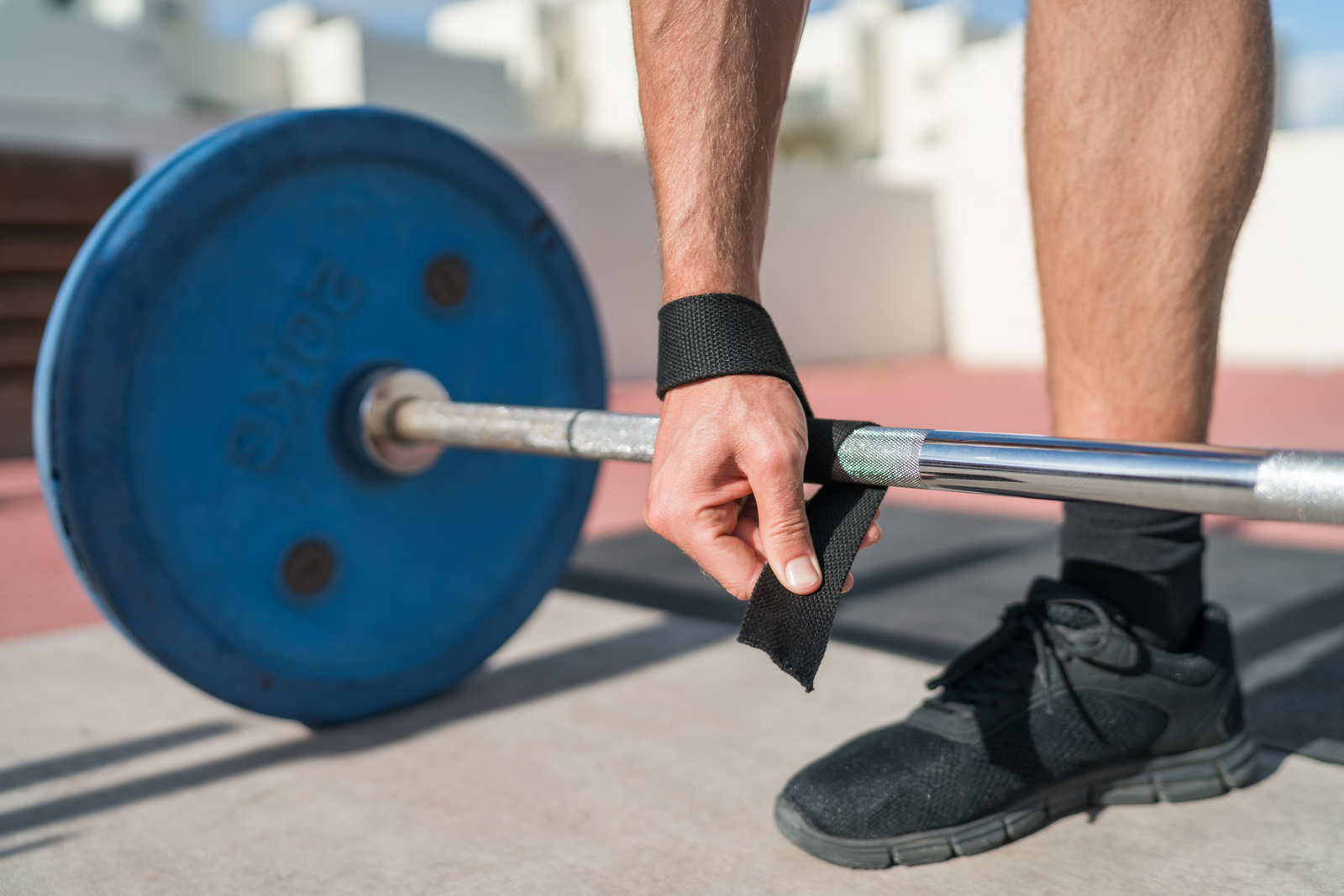
Weight Lifting Straps: Improve Your Workout
Ever wondered how weight lifting straps could take your workout to the next level? From boosting grip strength to enhancing muscle engagement, these unassuming accessories offer more than meets the eye.
Whether you’re a seasoned lifter or just starting out, incorporating weight lifting straps into your routine can make a remarkable difference in your performance and results. Let’s delve into the unexpected ways these simple yet effective tools can revolutionize your training sessions.
Understanding the Role of Weightlifting Straps
Enhanced Grip Strength
Weightlifting straps play a crucial role in enhancing grip strength during heavy lifting. When you’re pushing your limits with heavier weights, maintaining a strong grip can be challenging. This is where the straps come into play.
By providing additional support and stability for your wrists and hands, they help ensure that you can maintain a secure hold on the weight throughout your workout. Without them, fatigue from gripping the bar or dumbbell could limit the number of reps you can perform.
Weightlifting straps also reduce grip fatigue, allowing you to focus more on targeting specific muscle groups rather than struggling to maintain your grip. For example, when performing deadlifts or pull-ups, using weightlifting straps shifts some of the load away from your grip and onto other muscles like your back or legs.
Read Also: When and How to Use Weight Lifting Straps Effectively
Interaction with Muscles
The interaction between weightlifting straps and muscles is noteworthy. With reduced reliance on grip strength, these straps enable better engagement of targeted muscles during exercises such as lat pulldowns or shrugs. As a result, individuals can isolate specific muscle groups more effectively without being limited by their hand strength.
Moreover, using weightlifting straps may prevent unnecessary strain on the forearm flexors which allows for greater overall muscular development without compromising form due to fatigued grips.
Proper Use and Techniques for Weightlifting Straps
Wrapping the Straps Correctly
When using weightlifting straps, it’s crucial to wrap them securely around the barbell or dumbbell. Begin by placing the loose end of the strap through the loop, creating a secure attachment. This ensures that the strap stays in place during your workout, preventing any accidents or disruptions.
It’s important to note that the wrapping technique may vary depending on whether you’re performing a conventional deadlift, a snatch grip deadlift, or other exercises. For instance, when performing a conventional deadlift, you might opt for an overhand grip combined with weight lifting straps to enhance your grip strength and prevent slippage.
Adjusting Tightness and Gradual Progression
Adjusting the tightness of the straps is essential for ensuring a secure grip without compromising circulation. If they are too loose, they won’t provide adequate support; if they are too tight, they could restrict blood flow. Finding the right balance is key to maximizing their effectiveness.
Moreover, beginners should practice using weightlifting straps with lighter weights before progressing to heavier loads. Starting with lighter weights allows individuals to become accustomed to using straps while focusing on proper form and technique before advancing to more challenging workouts.
Benefits of Using Lifting Straps for Strength Training
Increased Muscle Growth and Strength Gains
Lifting straps are a game-changer. They enable you to lift heavier weights, which directly translates to increased muscle growth and strength gains. By using lifting straps, you can push your limits beyond what your grip strength alone allows. T
his means more significant stress on the muscles, leading to greater adaptation and growth over time. For example, during deadlifts, where grip fatigue often becomes a limiting factor, lifting straps can help maintain a secure hold on the barbell throughout the entire set.
Moreover, by reducing the reliance on grip strength, lifting straps allow you to perform more reps before reaching fatigue. This not only increases workout volume but also enhances overall intensity. As a result, your muscles experience prolonged time under tension during each set—another key factor in stimulating muscle growth.
Improved Form and Reduced Risk of Injury
Using weightlifting straps isn’t just about overcoming grip fatigue; they also play a crucial role in improving form and technique while reducing the risk of injury. When performing heavy lifts like deadlifts with compromised grip strength or sweaty palms, there’s an increased likelihood of improper form due to slipping or uneven gripping pressure.
When and How to Integrate Lifting Straps into Your Routine

Target Larger Muscle Groups
When performing exercises that primarily target larger muscle groups, it’s beneficial to consider using weightlifting straps. Movements like heavy deadlifts, pull-ups, and rows put a significant amount of stress on the grip. By integrating lifting straps into these exercises, you can shift the focus from your grip strength to the targeted muscle group, allowing you to work those muscles more effectively.
For example, during a deadlift completion time may be improved by using lifting straps as they reduce the strain on your forearms and allow you to maintain a better grip for longer periods. This enables you to lift heavier weights without being limited by your hand strength.
Read Also: How the Punching Bags Fine-Tune Your Fight Skills
Gradual Integration
It’s essential to integrate lifting straps gradually into your routine. While they can be incredibly useful tools, becoming overly reliant on them may lead to neglecting your natural grip strength development. Start by using lifting straps only when necessary or when aiming for new personal records in specific lifts.
During the setup phase of an exercise routine, incorporating lifting straps should not be an immediate go-to solution but rather something used strategically when challenging yourself with heavier loads or breaking through plateaus. This approach ensures that you continue developing overall strength while benefiting from the support offered by lifting straps.
Injury Prevention and Enhanced Safety with Lifting Straps
Preventing Grip Failure Injuries
Weight lifting straps are essential for preventing grip failure injuries during heavy lifts. When weightlifters attempt to lift heavy loads, their grip strength may fail before the targeted muscle group reaches fatigue. This can lead to accidents and injuries. By using straps, weightlifters can maintain a secure grip on the barbell or dumbbells, reducing the risk of dropping weights due to weak hand muscles.
Lifting straps help distribute the load more evenly across your hands and wrists, reducing strain and potential injury from uneven stress distribution. For example, when performing deadlifts or pull-ups, where an individual’s grip strength might be a limiting factor in terms of how much weight they can lift safely.
Promoting Proper Lifting Mechanics
Using lifting straps correctly promotes proper lifting mechanics by allowing individuals to focus on engaging specific muscle groups without being limited by their grip strength. This is especially beneficial for recreational weightlifters who may not have developed advanced gripping capabilities yet want to challenge themselves with heavier weights.
Furthermore, lifting straps can assist in maintaining joint angles during exercises such as deadlifts or rows by preventing premature release that might occur due to fatigue or inadequate gripping ability. This helps reduce the risk of lumbar lordosis (excessive inward curvature of the lower back) caused by improper form while lifting heavy loads.
Maximizing Your Workout: Advanced Strategies with Lifting Straps
Target Specific Muscle Groups
When using weightlifting straps, you can strategically target specific muscle groups that may be limited by grip strength. For instance, during a deadlift, your grip might give out before your legs and back are fully exerted. By utilizing lifting straps, you can maintain a firm grip on the barbell even when your hands fatigue, allowing you to focus on engaging those targeted muscles for an extended period.
Weightlifting straps also enable you to perform more repetitions at higher weights without worrying about losing your grip. This means that you can effectively work towards increasing your one-repetition maximum (1RM) in exercises like barbell rows or pull-ups.
Read Also: What You Really Need to Know Before Using a Reformer Machine
Combine with Other Training Tools
Incorporating resistance bands or chains along with weightlifting straps adds an extra challenge to your workouts. When combined, these tools create varying resistance throughout the exercise movement, which demands additional effort from different muscle groups. For example, attaching resistance bands to the barbell while using lifting straps during deadlifts increases the overall difficulty and engages stabilizing muscles.
Experimenting with different exercises and variations is crucial in maximizing the benefits of weightlifting straps in workouts. Whether it’s altering hand placement or trying new exercises altogether, diversifying your routine ensures that various muscle groups are consistently challenged and developed over time.
Final Remarks
You’ve now delved into the surprising ways weight lifting straps can revolutionize your workout routine. By understanding their role, learning proper techniques, and embracing the benefits, you’re on the path to maximizing your strength training. Remember, integrating lifting straps smartly and prioritizing injury prevention will elevate not just your performance but also your safety.
Now, it’s time to put this knowledge into action. Grab those lifting straps, hit the gym, and experience the difference for yourself. Don’t hesitate to experiment with advanced strategies to take your workout to new heights. Your fitness journey is about to get a serious upgrade!
